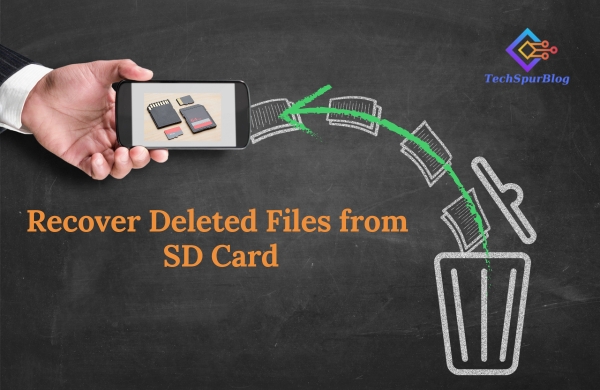
Nothing is more frustrating than realizing you’ve permanently deleted cherished memories or critical files from your SD card by mistake. Whether you accidentally formatted the card, lost data due to corruption, virus attack or unexpectedly removed files, all may not be lost.
With the right approach and tools, you can often recover deleted files from SD cards and get your precious data back.
In this guide, we’ll walk through exactly how to recover permanently deleted files, photos, videos, audio and other data from SD cards on both Windows and Mac seamlessly.
Why Files Get Deleted from SD Cards
There are several common scenarios that can lead to data loss from SD cards:
-
Accidental permanent deletion of files
-
Formatting the SD card
-
SD card becoming corrupt or raw
-
Malware or virus infection
-
Physical damage to the SD card
-
System crash or power failure while writing data
Regardless of the cause, when you delete files from an SD card, the data is not permanently erased right away. The SD card simply marks the space occupied by the deleted files as available to store new data.
As long as this space hasn’t been overwritten, you have an opportunity to recover deleted files.
Also Read: Techfelts : Extensive Solution to Recover Deleted Photos
How to Recover Deleted Files From SD Card on Windows
If you’ve lost data from an SD card on a Windows computer, here’s how to get it back easily:
-
Stop using the SD card immediately to prevent overwriting deleted files.
-
Download, install and launch a reliable data recovery tool like Stellar Data Recovery, EaseUS Data Recovery Wizard or Recuva.
-
Connect the SD card to your PC and let the recovery software detect and scan it.
-
Preview all recoverable files found on the SD card during the scan.
-
Select the specific files and folders you want to recover.
-
Restore the deleted data to a different storage location like your computer’s hard drive, not the original SD card.
Most data recovery programs have a simple wizard that walks you through the entire process step-by-step, making it easy for anyone to recover deleted data from SD cards on Windows 10, 8 or 7.
How to Recover Deleted Files From SD Card on Mac
For Mac users, the process to retrieve deleted data from SD cards is very similar:
-
Avoid using the SD card until you recover deleted files to prevent overwriting.
-
Get a reliable Mac data recovery application like Disk Drill, EaseUS Mac Data Recovery or Stellar Phoenix Mac Data Recovery.
-
Connect the SD card and let the software deeply scan it to locate all deleted files.
-
Preview the recoverable files and select the ones you want to restore.
-
Recover the deleted data to a safe location on your Mac’s hard drive or another storage device.
Again, most Mac data recovery tools are very user-friendly with clear instructions. But be sure to follow them carefully to maximize your chances of successful file recovery from SD cards.
Tips to Recover Deleted Files from SD Card Successfully
-
Act quickly before deleted files get overwritten with new data
-
Use data recovery software specifically designed for SD cards and flash storage
-
Avoid writing any new data to the SD card before file recovery
-
Always recover deleted data to a separate safe storage location, not the original card
-
For severely corrupted or damaged SD cards, seek professional data recovery services
With the right data recovery tool and technique, you can easily recover deleted personal files, documents, videos, music and most importantly – precious memories from SD cards on both Windows PCs and Macs.
Also Read: How to Use file:///sdcard/ to View Files on Android Fast and Easy
What to Do if File Recovery from SD Card Fails
In some cases, you may not be able to recover deleted files from an SD card despite your best efforts, especially if:
-
The SD card is physically damaged beyond repair
-
The deleted files were stored in a problematic file system
-
Too much time has passed and deleted files were overwritten
-
You kept using the SD card extensively after data loss
If you’ve tried all software data recovery methods without success, your last resort is to take the SD card to a professional data recovery service. Companies like Gillware, Secure Data, and Restoring Data Solutions have specialized tools, clean rooms and expertise to handle even the most severe cases of data loss from SD cards and other storage media.
Professional data recovery services use advanced techniques like PCB repairs, firmware repairs, and disk imaging to extract data from failed, corrupted or physically damaged devices. However, this level of professional service comes at a premium price, often costing hundreds of dollars.
So make every effort to recover deleted files yourself first using reliable data recovery software. As long as you act quickly and avoid overwriting deleted data, you have a very good chance of successful DIY file recovery from SD cards.
The Bottom Line
Whether you store your cherished memories or critical data on an SD card, accidentally deleting files can be a nightmare. But don’t panic – you can recover permanently deleted data from SD cards easily by following the right methods.
With a little care and the help of powerful data recovery tools, you can get back lost files, photos, videos and more hassle-free on both Windows and Mac

Leave a Reply